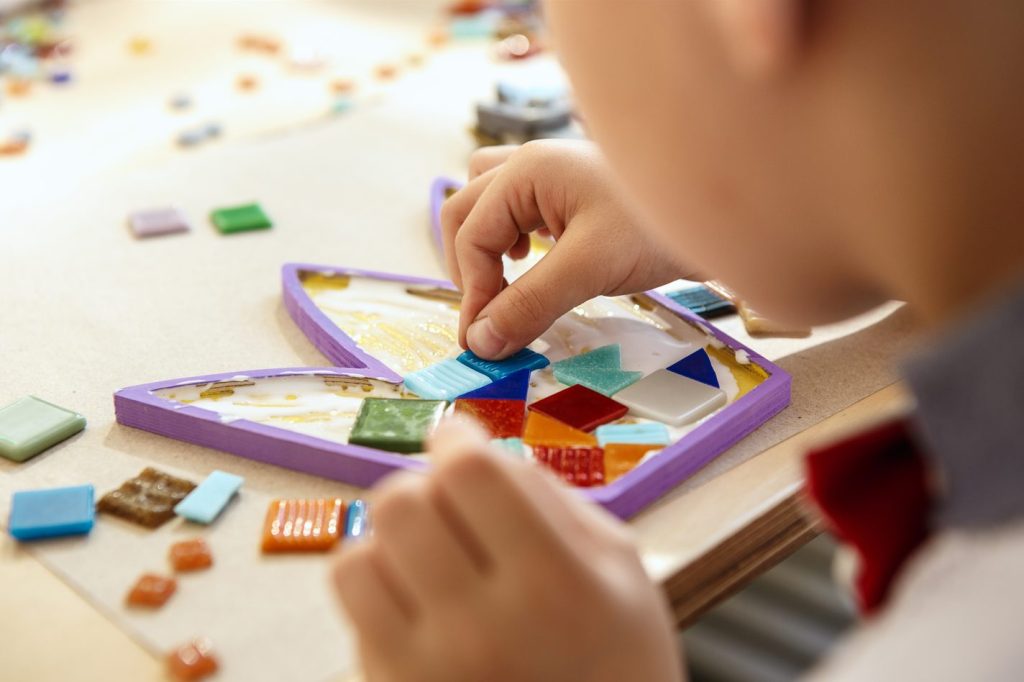In individuals with ADHD (Attention Deficit Hyperactivity Disorder), there are several areas of the brain that are affected, but one key region is the prefrontal cortex, which is part of the frontal lobe. The prefrontal cortex is responsible for executive functions such as attention regulation, impulse control, organisation and decision-making. In individuals with ADHD, there is often dysfunction or underactivity in this area, leading to difficulties in maintaining attention, controlling impulses and organising tasks.
The Build-a-B.R.A.I.N. Program and ADHD

Building Neural Pathways (B): The program provides structured activities designed to enhance cognitive abilities such as attention, working memory and impulse control. Through exercises that challenge and strengthen neural pathways in the prefrontal cortex, children with ADHD can improve their executive functioning skills.
Resilience (R): The program can incorporate strategies to help children develop resilience in managing their ADHD symptoms. This might include teaching coping mechanisms for frustration, stress and distraction, as well as fostering a supportive environment where children feel encouraged and understood.
Activity and Awareness (A): By promoting physical fitness and healthy habits, the program can increase children’s awareness of the connection between lifestyle choices and ADHD symptoms. Engaging in regular physical activity can also help reduce hyperactivity and improve focus and concentration.
Independent Exploration (I): Independent Exploration encourages curiosity and critical thinking, expanding children’s knowledge and understanding of the world around them.
Nurturing (N): The program can provide a nurturing environment where children feel valued and supported in exploring their strengths and interests. Through activities that encourage creativity, self-expression and problem-solving, children with ADHD can build confidence and develop a sense of competence.
Overall, the Build-a-B.R.A.I.N. program can offer a holistic approach to supporting children with ADHD by addressing their cognitive, emotional and physical needs while nurturing their individual strengths and promoting resilience in managing their symptoms.
Additionally, other regions of the brain involved in attention and impulse control may also be affected in individuals with ADHD, including the basal ganglia and the cerebellum. These areas play roles in motor control, coordination and attention regulation, and abnormalities in their functioning have been observed in individuals with ADHD.
The Build-a-B.R.A.I.N. program can support children with ADHD in developing independent exploration skills through its child-cantered approach and emphasis on hands-on learning. Here’s how:
Encouraging Self-Directed Learning: The Build-a-B.R.A.I.N. Program provides opportunities for children with ADHD to engage in self-directed exploration. By offering a variety of activities and materials that cater to different interests and learning styles, children are encouraged to choose activities that appeal to them, fostering a sense of autonomy and independence.
Flexible Learning Environment: The program allows children to explore topics at their own pace and in their own way. This flexibility accommodates the varying attention spans and interests of children with ADHD, allowing them to engage in activities that capture their attention and maintain their interest.
Multi-Sensory Learning Experiences: The Build-a-B.R.A.I.N. Program incorporates multi-sensory activities that appeal to different senses and learning modalities. For children with ADHD, who may benefit from hands-on and experiential learning, these multi-sensory experiences can facilitate engagement and retention of information, encouraging independent exploration and discovery.
Promoting Problem-Solving Skills: The Build-a-B.R.A.I.N. Program includes activities that require children to think critically and problem-solve independently. By providing opportunities for children to overcome challenges and find solutions on their own, the program helps build confidence and resilience, empowering children with ADHD to explore and navigate their environment more independently.
Supporting Executive Functioning Skills: The Build-a-B.R.A.I.N Program incorporates activities that target executive functioning skills, such as planning, organisation and self-regulation—all of which can be challenging for children with ADHD. By practicing these skills in a supportive and structured environment, children develop greater independence in managing tasks and activities, fostering a sense of competence and capability.
Overall, the Build-a-B.R.A.I.N. Program provides a supportive framework for children with ADHD to engage in independent exploration and learning. By offering a flexible and inclusive learning environment, incorporating multi-sensory experiences and promoting problem-solving and executive functioning skills, the program empowers children with ADHD to take ownership of their learning journey and explore the world around them with confidence and curiosity.
Building Neural Pathways (B): Neurotypical children can enhance their cognitive abilities, problem-solving skills and language proficiency through activities that challenge their thinking and encourage creativity. Strengthening neural pathways in areas such as the prefrontal cortex can improve their academic performance and cognitive flexibility.
Resilience (R): The program can teach neurotypical children resilience skills to cope with everyday challenges and setbacks. By fostering a growth mindset and encouraging positive self-talk, children can develop the resilience needed to navigate obstacles and setbacks effectively.
Activity and Awareness (A): Neurotypical children can develop an appreciation for the importance of maintaining a healthy body and lifestyle. Engaging in physical activities and learning about nutrition can help them understand the connection between their health and overall well-being.
Independent Exploration (I): Independent Exploration encourages curiosity and critical thinking, expanding children’s knowledge and understanding of the world around them.
Nurturing (N): The program provides a nurturing environment where neurotypical children can explore their interests, express themselves creatively, and develop interpersonal skills. By fostering a sense of belonging and acceptance, children can build confidence and self-esteem.
Overall, the B.R.A.I.N. program offers neurotypical children opportunities for growth, self-discovery, and skill development in various areas, ultimately supporting their holistic development and well-being.










